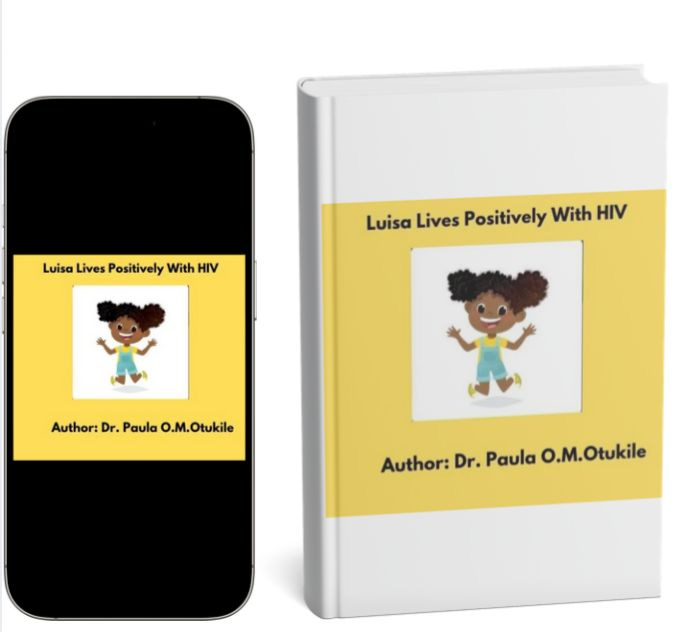Botswana’s HIV Journey Through the Lens of Dr. Paula O.M. Otukile, Author & Human Rights Activist
We must acknowledge that we are all affected, even if not infected. It is crucial to "take the right path" to health and well-being. Remember, reinfection is a real concern, and AIDS can impact anyone
GABORONE, BOTSWANA—This year, we commemorate the 37th World AIDS Day with the theme: "Take the right path: My health is my right; the world can end AIDS if everyone’s rights are protected", writes Dr. Paula O.M. Otukile 🌍❤️
Reflecting on the early 1990s, AIDS was largely unknown and often misunderstood. Misconceptions, stigma, and discrimination dominated the discourse surrounding the disease.
What happened during this tumultuous time?
The early '90s were marked by a significant lack of resources in many households. In those days, teachers were elite figures in society, while young bankers were regarded as queens, often celebrated for their beauty more than their qualifications. A bank teller was a source of excitement.
I remember the first time I saw a pair of stilettos. They belonged to a nurse. The admiration for that graceful walk was palpable. “O ne a gata a kwanya tota jaaka nnese!” people would say, referring to a girl returning from the city with new high heels. This illusion created a sense of aspiration among the working class, including nurses, teachers, soldiers, and police officers.
Education pathways were simpler then. A child could complete seventh grade and go on to a teacher-training college. As time progressed, the requirements changed, and now, a Botswana General Certificate of Secondary Education (BGSCE) is essential for university admission.
Opportunities for young men and women were limited. Women primarily focused on marriage and raising children, while a fortunate few attended tertiary institutions and found jobs.
Condoms and Community
Families were closely knit. Relatives and neighbours were considered family, and children belonged to the community. During adolescence, social interactions often took place at the river, where girls went to fetch water. A girl’s movements were monitored, as being out in public meant potential marriage prospects and additional cattle for her family.
Teenage pregnancies were prevalent, largely due to the taboo around sex education and limited access to condoms.
Diseases and Stigmas
Traditional medicine played a significant role in the community. While promiscuity existed, it was not as widespread as it is today. The term “Nyatsi” was used to describe a concubine, but married men typically kept such relationships discreetly, often relying on herbal remedies to avoid public scandal.
Sexually transmitted diseases were present but rare, thanks to the conservative behaviour of the time.
A Revolution of Change
As more fathers began working in the mines, societal dynamics shifted. More people moved to cities, attended colleges, and secured jobs. Some girls started going to camps to see their boyfriends. A few became village champions, while others indulged in a lifestyle marked by multiple relationships, leading to a decline in moral values, alcohol abuse, and a newfound financial freedom among the youth.
Living independently, free from parental supervision and curfews, became the norm. However, this lifestyle often leads to adverse health consequences. Symptoms began to manifest among those who lived life in the fast lane, including:
- Weight loss
- Persistent stomach pain or diarrhea
- Hair changes
- Chronic headaches
- Skin lesions
**Victims of Stigma**
Those affected faced discrimination and gossip, leading to stress and feelings of shame. Many experienced late-stage self-judgement upon realising they had contracted the disease. Tragically, some took their own lives, while others shunned medical care for fear of judgement.
President Mogae's Fight Against Stigma
In response to the crisis, President Festus Mogae took significant steps to combat AIDS. His initiatives included:
- Establishing the National Coordinating AIDS Agency
- Promoting rapid HIV testing
- Implementing compulsory Prevention of Mother-to-Child Transmission (PMTC) programs
- Ensuring the availability of antiretroviral therapy (ARVs)
These efforts led to a reduction in deaths and a more skilled workforce. Many people enrolled in ARV therapy, and although stigma persisted, it was less severe than in the past.
A Shift in Perception
Now, two decades later, the stigma surrounding HIV has diminished significantly. Many individuals can openly discuss their status without fear of judgment. Confession and disclosure have become easier, and it is common to hear children reminding their parents to take their ARVs.
While a minority still feels ashamed, the overall perception has shifted.
Challenges Remain
Despite this progress, some individuals still struggle. Reasons for ongoing fatalities include:
- Non-adherence to medication
- Avoidance of regular check-ups
- Poor dietary habits and stress
Those who adhere to their treatment regimens, however, have experienced significant improvements in their health. Many have lived for 10 to 20 years or longer without complications, leading to a sense of empowerment.
A Call to Action
We must acknowledge that we are all affected, even if not infected. It is crucial to "take the right path" to health and well-being. Remember, reinfection is a real concern, and AIDS can impact anyone, regardless of their background.
“Tsala e mang le Aetsi Ntse Ke Tsala!”
*A friend with HIV is still a friend!*




